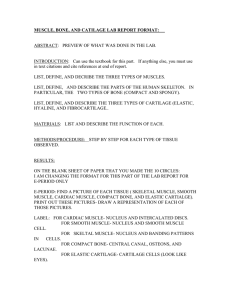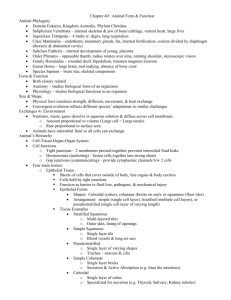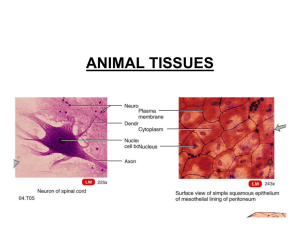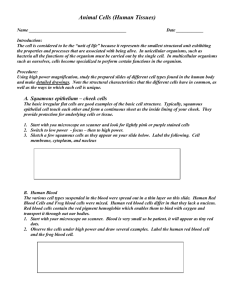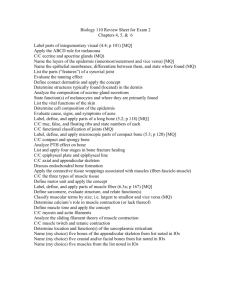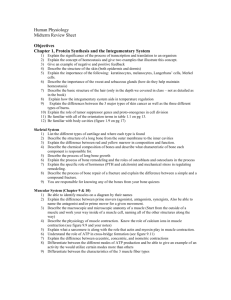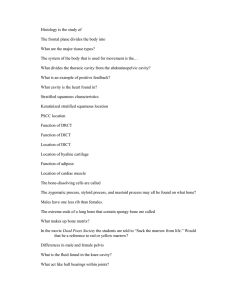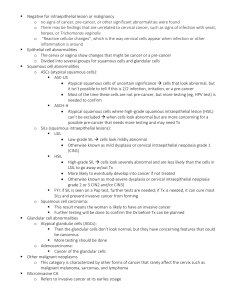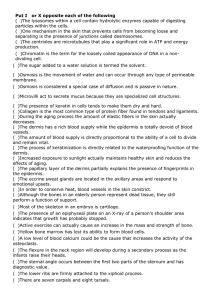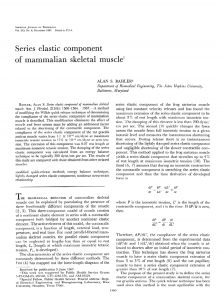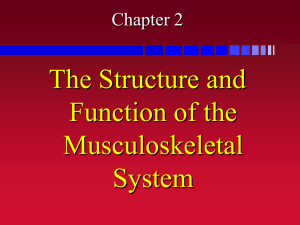Chalk Review- Chapter 5, Anatomy and Physiology
advertisement
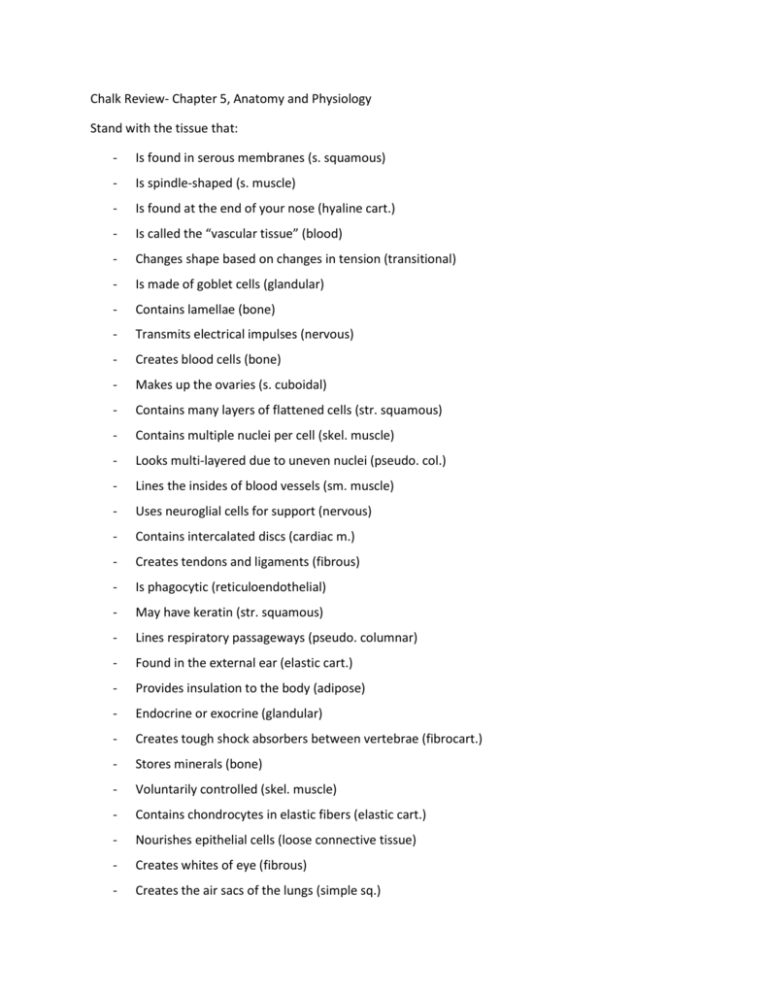
Chalk Review- Chapter 5, Anatomy and Physiology Stand with the tissue that: - Is found in serous membranes (s. squamous) - Is spindle-shaped (s. muscle) - Is found at the end of your nose (hyaline cart.) - Is called the “vascular tissue” (blood) - Changes shape based on changes in tension (transitional) - Is made of goblet cells (glandular) - Contains lamellae (bone) - Transmits electrical impulses (nervous) - Creates blood cells (bone) - Makes up the ovaries (s. cuboidal) - Contains many layers of flattened cells (str. squamous) - Contains multiple nuclei per cell (skel. muscle) - Looks multi-layered due to uneven nuclei (pseudo. col.) - Lines the insides of blood vessels (sm. muscle) - Uses neuroglial cells for support (nervous) - Contains intercalated discs (cardiac m.) - Creates tendons and ligaments (fibrous) - Is phagocytic (reticuloendothelial) - May have keratin (str. squamous) - Lines respiratory passageways (pseudo. columnar) - Found in the external ear (elastic cart.) - Provides insulation to the body (adipose) - Endocrine or exocrine (glandular) - Creates tough shock absorbers between vertebrae (fibrocart.) - Stores minerals (bone) - Voluntarily controlled (skel. muscle) - Contains chondrocytes in elastic fibers (elastic cart.) - Nourishes epithelial cells (loose connective tissue) - Creates whites of eye (fibrous) - Creates the air sacs of the lungs (simple sq.)

